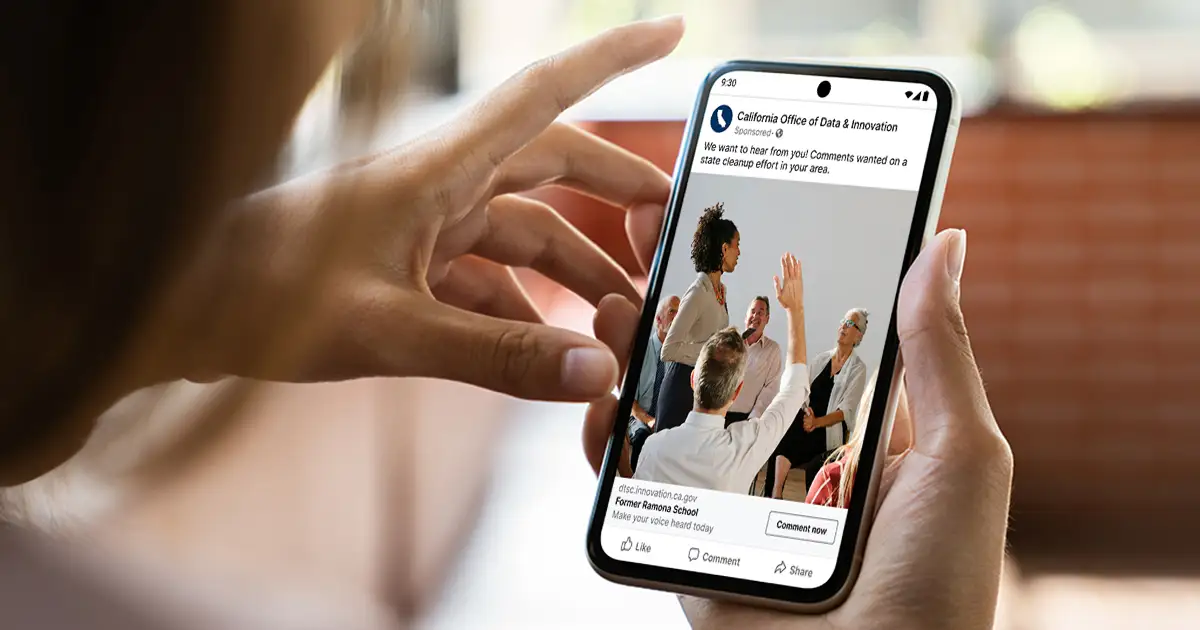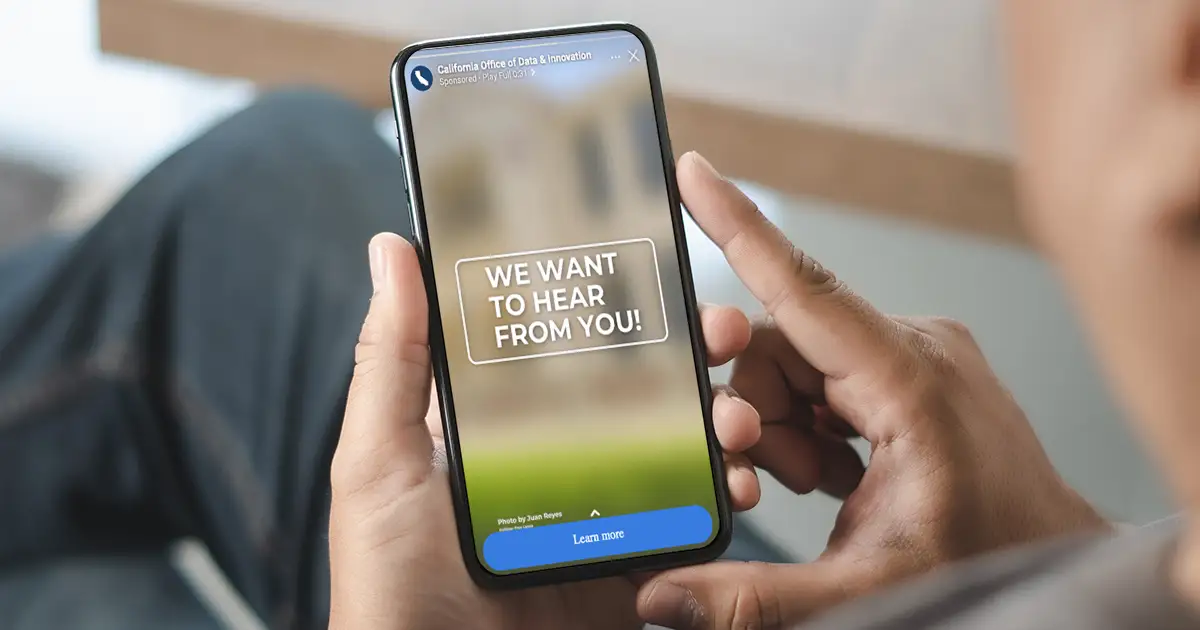One duty of the Department of Toxic Substances Control (DTSC) is to oversee permitting and cleanups of toxic substances. This includes engaging with the communities near properties where environmental cleanup is necessary.
In an effort to increase public comment, the Office of Data and Innovation (ODI) and DTSC worked on expanding engagement with Californians. We wanted to reach communities that historically lack a voice in decisions.
Where we started
People in underserved communities often lack access to laptop or desktop computers. This is a barrier to engagement. DTSC thought we could reach these communities through mobile devices. Our goal was to create a mobile experience that was easy to navigate and engaged Californians.
DTSC engages communities throughout the life of a project, so we had options for what kind of engagement we could work on. We focused on public comment. It’s a formal way for people to tell the state what they think of a proposed project. One benefit of public comment is we could measure the impact of any changes we tried. We had data on how many comments are typically submitted as a baseline. As we tried various techniques, we could measure if public comment increased or decreased from the baseline.
Our digital solution
ODI built a prototype for DTSC project’s webpages. We used human-centered design principles in the webpage layout and content development. We tested our prototype with Californians to make sure it was easy to use. Our goal was to make the information easy to find and understand.
We also created a web-based form that the public could use to submit a comment. Before this page, people had to fill out a paper form they got through the mail or email the project manager.
The webpage opened up a new way to drive awareness of projects: social media. Neither ODI nor DTSC had a large social media following to promote the page. We decided to use Facebook ads to let people know about the opportunity to comment.
Ads with images
For our first 2 projects, we paired brief text with images. We translated them into Spanish because many of the people in the community speak Spanish.

We set our ad radius to 1 mile around the project sites. This was the closest match to the ¼-mile radius DTSC used for their mailers. Our campaign goal was to maximize webpage views.
We didn’t get any public comments through either ad. The ads got 314 clicks over 2 weeks. We decided to change course.
Ads with video
We connected with DTSC’s social media manager before our next test. We made 3 changes to our Facebook ads.
First, we changed from images to videos. DTSC made videos in English and Spanish about the opportunity to comment on the project.

Second, we increased our ad radius to 20 miles. The project was at the only high school in a school district. We thought there could be broader interest in the site as a result. The new radius covered most of the school district.
Third, we connected the prototype to Facebook’s analytics. Facebook now knew when someone submitted a public comment. Facebook could now look for people who were likely to make a comment.
The results were dramatic.
We got 19 public comments through the Facebook ads. An average DTSC project of this type gets 2-3 comments. This matched the 3 comments we got through other methods for this project. Facebook ads resulted in a 733% increase in public comment.
81% of the Facebook public comments came from a mobile device. DTSC’s instincts were right: people on mobile devices were an untapped source of comments.
Facebook also helped us reach Spanish-speaking communities. Almost 70% of our comments from Facebook were in Spanish. We achieved our goal of engaging an underserved community.
People also engaged with the ad on Facebook itself. We got:
- 24 comments
- 24 shares
- 72 emoji reactions
This suggests that DTSC could strengthen its engagement strategy by including Facebook.
Our findings
The results of this project were clear. Californians will engage in government projects if you:
- Meet them where they are (in this case, on social media accessed through mobile devices)
- Make it easy for them by giving them a way to comment in the moment on a webpage
- Involve a wider community by going beyond people right next to a project
This partnership with DTSC was part of the Data and Innovation Fund. It’s one of the ways ODI works with state departments to deliver better services to Californians. We look forward to sharing more stories of how we’re making state government better.